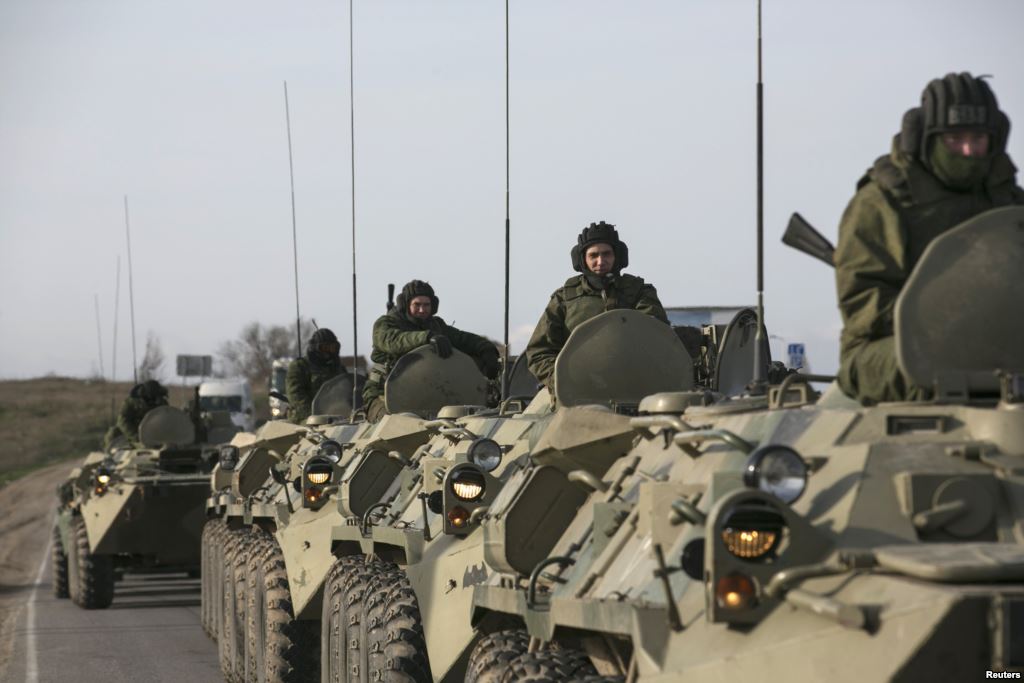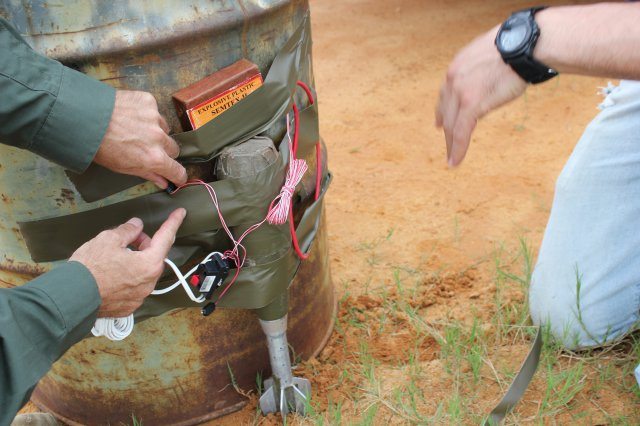Commandos sneak up on a fortress in southern Poland. Camouflaged behind sandbags, they fire their Kalashnikov rifles to free the hostages.
But the fortress is really a school and the machine guns are fake. The bullets are blanks and the hostages are there of their own accord.
The participants are all volunteers taking part in a military manoeuvre motivated by security concerns over the crisis in neighboring Ukraine.
“I shot three,” cries one of the weekend warriors at the elementary school in the southern town of Ostrowiec Swietokrzyski, where the training scenario says “little green men” are pretending to hold Polish officials hostage.
The little green men are the enemy — stand-ins for the real-life fighters with the same nickname who have been helping pro-Kremlin separatists battle government forces in Ukraine.
The West and Ukraine suspect them of being elite Russian special forces. Russia says this is absolutely not true.
The 200 men and handful of women taking part in the school yard military manoeuvres are members of the Strzelec paramilitary organization and have descended on Ostrowiec Swietokrzyski from across Poland to take part in their annual exercise.
The event has been organized annually since 2010 but this year there is added urgency from the Ukraine crisis.
“The geopolitical situation is what it is. There’s an armed conflict is eastern Ukraine,” says Adam Dluzniak, a 25-year-old who plays one of the bad guys.
“It’s no surprise that large numbers of youths are joining our group to serve as back-up for our regular armed forces,” the history professor by day tells AFP.
Army not enough
The Strzelec paramilitary was founded by Poland’s interwar independence hero Jozef Pilsudski in 1918.
By the outbreak of World War II — when both Nazi Germany and the Soviet Union invaded within two weeks — the organization had 500,000 members.
“The professional army is not enough,” says Dluzniak, who lives in the southern city of Czestochowa and has been campaigning in favour of local defence units.
“Poland’s regular forces number around 100,000 men today. That is not enough to protect our territory,” he tells AFP.
More and more cities across Poland, but especially in the east that borders Ukraine, are showing interest in setting up their own paramilitary groups.
“The events in Ukraine have stirred certain fears among Poles,” says Michal Swiostek.
“Everyone knows Poland’s history and everyone knows that the aggressor is closer than you may think,” adds the 22-year-old Warsaw student.
The same fervor for local defence is sweeping across the region’s Baltic states. Last month, Latvia’s home guard had already recorded more new members than it had in all of 2013.
Meanwhile the Vilnius unit of the Lithuania Riflemen’s Union has tripled in size since the start of the crisis in Ukraine.
Not paranoia
“It’s not paranoia, nor is it fanaticism. It’s patriotism,” says Dariusz Kanabaj, a 25-year-old human resources manager from the central town of Plonsk.
“Personally, I don’t fear (a Russian attack). No need to be afraid yet, but we can still prepare ourselves for that kind of scenario.
“It’s like that Latin proverb: ‘Si vis pacem, para bellum’. If you want peace, prepare for war,” he adds.
The would-be hostages are freed after half an hour of mock battle and the enemy is taken prisoner.
Then comes the fanfare. The warriors parade around the town’s large square, cheered on by local officials and the Polish president’s defence advisor, General Stanislaw Koziej.
Koziej is also head of the BBN office of national security, which sponsored the manoeuvre for the first time this year.
“The task at hand for the country’s institutions is to think about how we can incorporate these men into the national defence forces,” he says.











